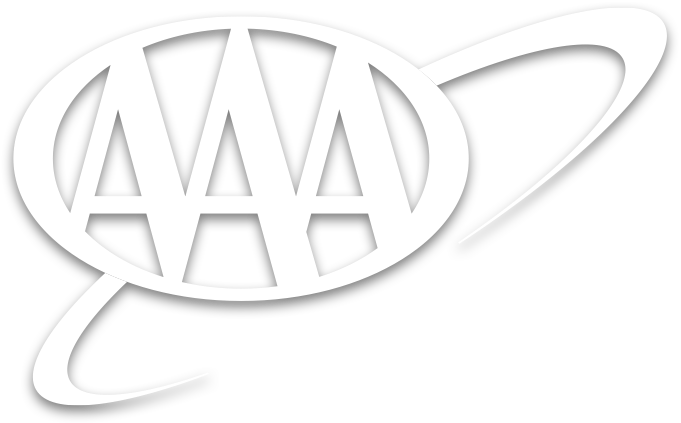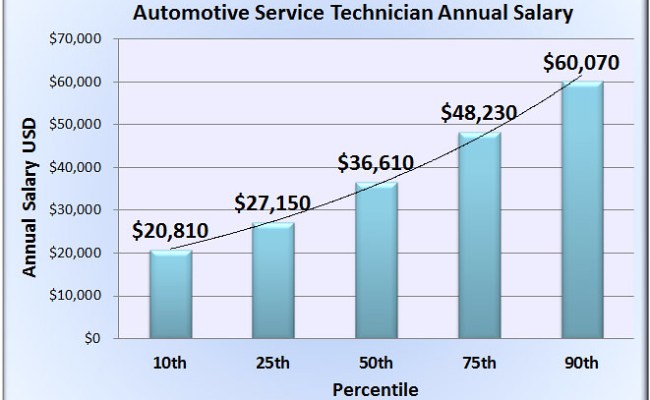
AAA approved sticker will help you find a reliable car repair shop. The sticker will indicate that the shop meets AAA standards. It will also display the date of approval. These stickers are available to AAA members, but they won't be eligible for the AAA benefits. These stickers will indicate to customers that the auto-repair shop meets AAA's standards. They also show customers that they are continuously approved by their customers.
Dispute resolution
AAA offers arbitration if you are unhappy about the quality of AAR facility auto repair services. AAA will investigate and make a recommendation. The AAA's decision will be binding for the facility. You, as a AAA member, do not have to accept it. If you disagree with the decision you can always seek recourse via other means. For assistance if you are unhappy with the quality or service provided at an AAR facility, contact the BBB/ASE.

Inspection of 40 points
AAA members receive free inspections of their vehicles. The inspection is free and includes a detailed written report detailing all the necessary repairs. It can be carried out at any AAA approved auto shop. AAA members can receive a 10% discount on labor, parts and priority service. This includes 60-minute vehicle evaluations. AAA members can also request alternate transportation while their vehicle is in the shop.
Member benefit
AAA has been a leader of car repairs for over 100 years. An excellent member benefit is the Approved auto repair designation. AAA members should be happy with the quality of these repair facilities. All workers must have ASE or manufacturer certification. The work quality is guaranteed for 24 month or 24,000 miles. AAA requires all members to complete a satisfaction survey after each service. While the AAR designation can be valuable in many ways it could be the most important benefit.
ASE-certified mechanics
AAA Approved Auto Repairs program was established in 1975. AAA inspects thousands repairs facilities each year. It requires ASE Certified mechanics and exceptional customer service. AAA-approved auto repair facilities offer 24-month warranties on repairs. AAA-certified mechanics offer superior service and are guaranteed quality and reliability. AAA approved auto repair facilities use ASE-certified mechanics for your security.
Standard of quality
AAA created the Approved Automobile Repair Program in 1975 to help millions of drivers find reliable, quality repair services. Each year thousands of repair centers are inspected to make sure they meet high standards for technical competence and customer service. The AAA requires ASE certified technicians to complete work, and all repair facilities must use the latest diagnostic equipment. AAA-approved auto repair shops must also adhere to strict environmental regulations and dispose of waste properly.

Cost
AAA Approved auto repair program is a great method to save money while still receiving high-quality service. Inspections are conducted to verify that certified repair facilities meet stringent standards of cleanliness, competency, and safety. To ensure that they meet the standards, these shops are inspected each year. AAA members have access to priority service, as well as a nationwide warranty for qualifying services. AAA members can even seek arbitration if a repair shop fails to meet their standards.
FAQ
What do I need to know about car mechanics?
To be an auto mechanic, you don't have to know much about cars. Only you need to know how things work. That's why most people start doing jobs like fitting brake pads or changing tires before progressing to more complex repairs.
You'll need the ability to read and understand diagrams and to follow simple rules of good practise. You'll also need to be able to judge whether parts need replacing or repairing.
You should not attempt to fix vehicles without proper training and guidance. This is especially true if you deal with expensive components such as engines or transmissions.
In fact, even though you won't need to know much about cars, you will need to thoroughly know the basics of mechanical engineering and physics. This includes understanding the mechanics of how engines and brakes work.
It's also worth noting that you'll need to be prepared to deal with all sorts of situations. You might be required to work on a vehicle that was involved in an accident. Additionally, you will need to have experience with handling accidents and breakdowns.
You must also be willing to learn quickly. As well as being able to diagnose problems, you'll need to be able to perform simple maintenance tasks such as tightening nuts and bolts.
How long is an apprenticeship for an automotive mechanic?
A three-year apprenticeship in automotive mechanics takes. It includes two years of school and two years as an apprentice. The first year is dedicated to learning the theory and practical skills of the trade. You'll also learn the safe and efficient use of tools during this first year. After completing the first year, you'll then spend another year on-the-job training where you'll gain experience in different areas of the trade. You'll have the opportunity to attend formal courses during these periods too.
The final year of the program is spent gaining qualifications and becoming certified in the field. These include NVQs (National Vocational Qualifications), which are awarded after passing exams covering specific topics within the industry. You can also get HNCs (Higher National Certificates), that cover subjects such as customer service, business administration, management, and business administration. Finally, there are City & Guilds certificates that are offered for those who wish to become qualified in certain trades.
What are the requirements of an auto technician?
High school graduation or GED is required with excellent grades in English and math. You also need to be able to read and write well. To be allowed to work, you must pass a written and practical test.
To be a car mechanic, do you need a degree? Can I study part time?
A degree isn't necessary, but it certainly helps. Employers will prefer candidates who have completed a degree. It shows that your efforts have been put in and you have succeeded.
However, it doesn't mean you can't still work while studying. Many universities permit students to take courses during the summer holidays, and then finish their studies in the fall. Others let students take classes part-time throughout the year.
What qualifications do you need to be a truck-mechanic?
You don't have formal qualifications for this role, but you are very experienced working on trucks and engines. Your knowledge is valuable as you are able to quickly diagnose problems and work efficiently.
A solid understanding of diesel technology is also a plus. This will help you understand the components that are needed to fix our vehicles.
Statistics
- The U.S. Bureau of Labor Statistics (BLS) reports that the job outlook for automotive service technicians and mechanics is expected to decline by 4% from 2019 to 2029. (indeed.com)
- 52% of Mechanics in the United States think their salaries are enough for the cost of living in their area. (indeed.com)
- According to the BLS, total auto technician employment is expected to exceed 705,000 by 2030. (uti.edu)
External Links
How To
How to properly diagnose your car for repair
To determine if your car needs repairs, you should first look at the symptoms that your car presents. These steps will help you diagnose your car properly.
-
Check engine lights. You should inspect the dashboard lights, such as the engine light indicator and the oil pressure gauge. Also, check the battery light indicator. If any of them have been flashing for several days, it may mean something is wrong with your vehicle.
-
Take a look at the treads. Tires that are worn can cause issues with handling and braking. The treads of the wheels should be inspected as well. They should be clean and smooth. It is best to take off the wheels and remove them. Check the tread condition with a flashlight.
-
Monitor the level and consistency of your brake fluid. You must always monitor the level of your brake fluid. This will ensure that your brakes run smoothly. If your brake fluid level is low they might not work properly when you apply pressure.
-
Test the suspension system. Most vehicles have a suspension system that absorbs shocks and vibrations. It improves control and allows for smoother accelerations or decelerations. It might feel uncontrollable or wobbly if your vehicle is suffering from a suspension problem. To test whether your vehicle has a suspension issue, try putting weight on the front or rear axle and observe the movement.
-
Take a look at the steering column. The steering columns are what connect the steering knob to the rest. Many accidents can cause damage to steering columns. If yours feels loose or shaky, you should replace it.
-
Observe the exhaust pipes. Exhaust pipes help move gases from the combustion chamber to the atmosphere. Exhaust pipes that are cracked or leaking can allow harmful fumes to enter your cabin. You should also fix any bent tailpipes immediately.
-
Look under your hood. If you see anything unusual, take a look under the hood. Your engine could be leaking fluids. Also, professional technicians should be called if you detect an unusual smell coming out of your engine compartment.
-
It is important to inspect the air filter. The vehicle's outside environment may cause the air filter to collect dust and debris. Dirty air filters can cause your vehicle to run poorly. Replace your air filter regularly.
-
Check the fan belt. Your vehicle's fanbel is what connects the engine and the transmission. If the fan belt fails, the engine won't start. Replacing the belt is simple. All you need is a screwdriver and some pliers.
-
Check the radiator hose and hoses. The radiator-hose carries water to the engine. If it becomes cracked or damaged, it can leak hot liquid onto the engine. To repair the leaky hose, all you need is a pair if needle-nosepliers.
-
You should inspect the windshield wipers. Windshield wipers use electricity for snow and rain removal. If they stop working, streaks could be left on your glass. You can fix the problem by changing the washer fluid.
-
The battery cables should be checked. The battery cables provide power for the electrical systems in your car. Before you change batteries, disconnect the positive cable. Failure to do so can damage your alternator.
-
Make sure your headlights are working properly. The headlights will illuminate the road ahead. Poor visibility can result if the headlights don't function properly. To check if the bulbs have gone out, you can inspect them.
-
Always check your lights. When you approach them at night, the lights warn other drivers. If one doesn't work, it could distract you and lead to an accident.
-
You should inspect your brakes. Brakes slow down your vehicle before a collision. If your brakes aren't working properly, you may lose control and crash into other cars.
-
Change the oil. The oilkeeps your engine lubricated. It helps prevent metal parts from wearing out too quickly. It is recommended to change the oil once a month.